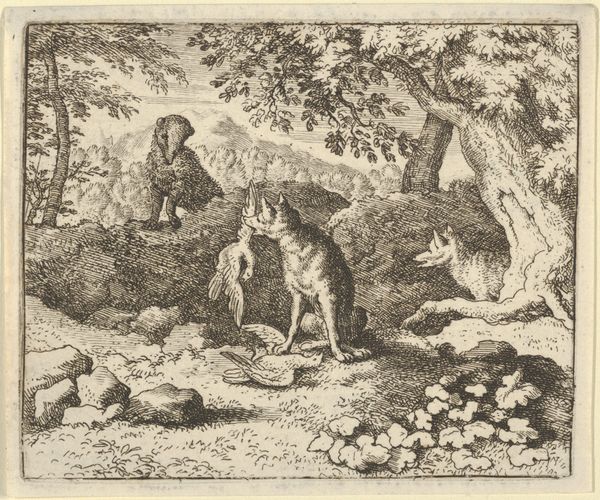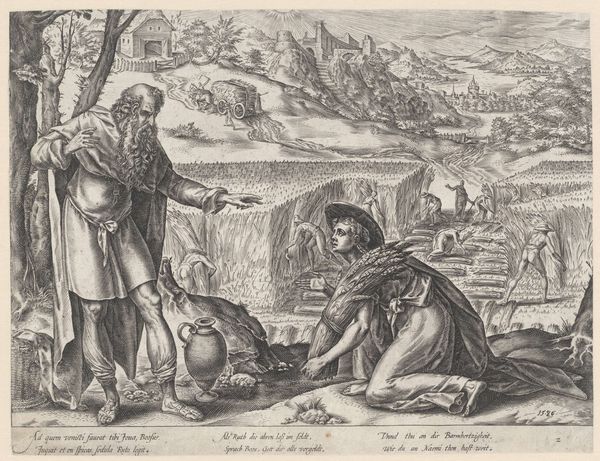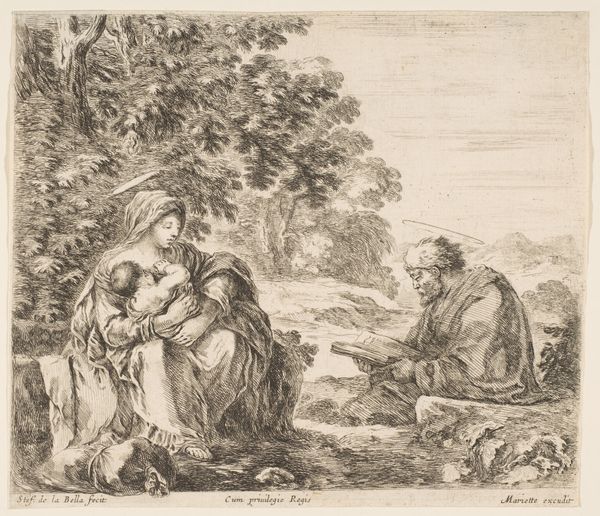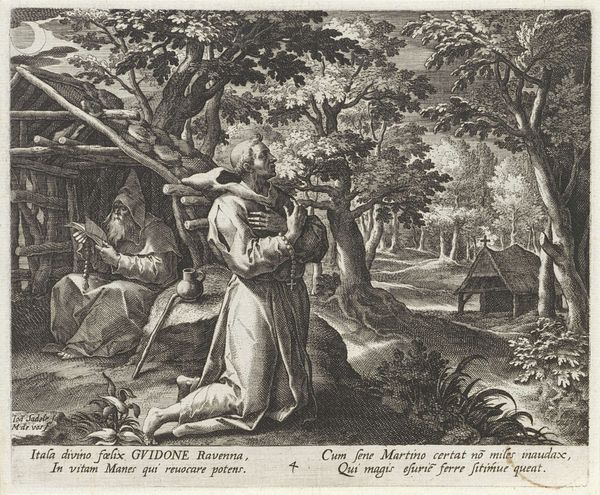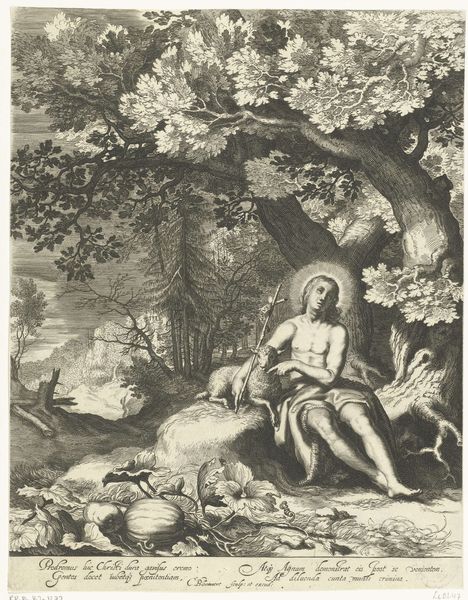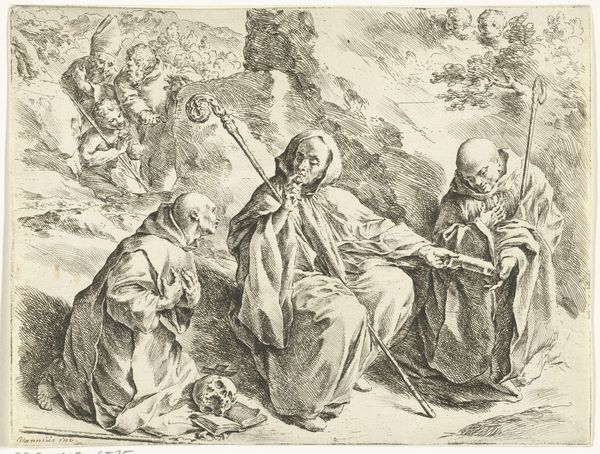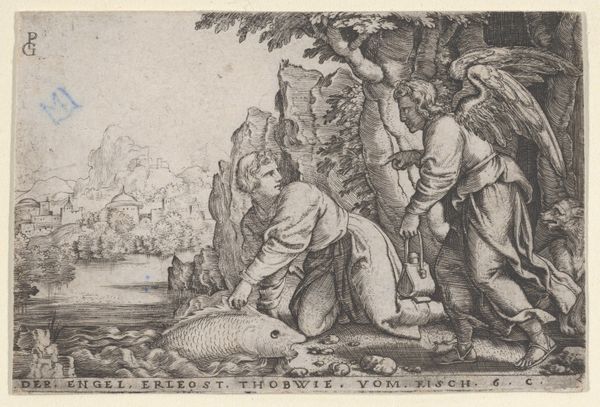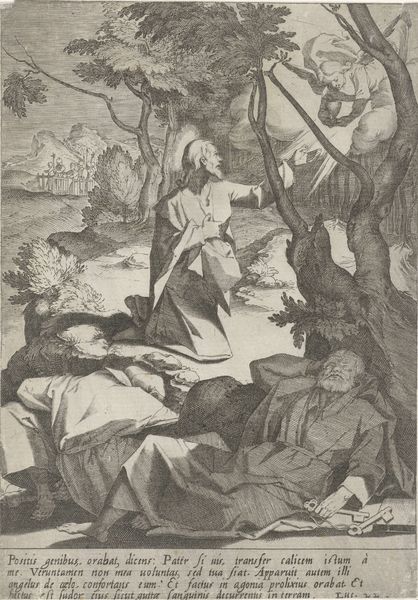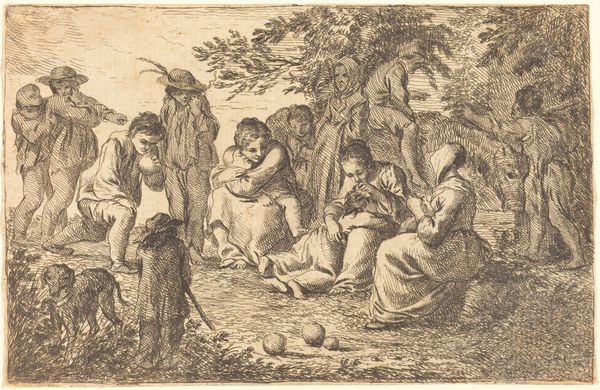
oil-paint
#
narrative-art
#
baroque
#
dutch-golden-age
#
oil-paint
#
landscape
#
figuration
#
oil painting
#
mythology
#
genre-painting
Copyright: Public Domain: Artvee
Jan Steen painted "Erysichthon selling his daughter" during the Dutch Golden Age, capturing a moment rife with social commentary. This piece, set against a backdrop of rustic poverty, shows a father selling his daughter. Steen uses this scene from classical mythology to reflect on the economic hardships and moral compromises prevalent in 17th-century Netherlands. The inclusion of everyday items like bread and fish, alongside the haggard figures, roots the mythological tale in the grim realities of Dutch society, hinting at themes of desperation and moral decay. Steen critiques social structures through his art. He presents a narrative that questions the cost of survival and the exploitation of the vulnerable. Studying records of the Dutch economy, social policies, and moral treatises from that era helps us uncover layers of meaning and the poignant social commentary embedded in Steen's vivid depiction.
Comments
No comments
Be the first to comment and join the conversation on the ultimate creative platform.
